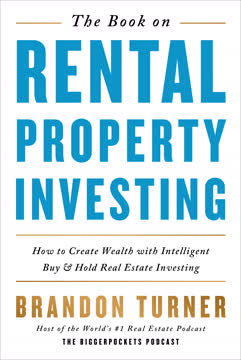Key Takeaways
1. Embrace out-of-state real estate investing for greater opportunities
Don't wait to buy real estate; buy real estate and wait.
Expanded investing horizons. Out-of-state real estate investing opens up a world of opportunities beyond your local market. By looking beyond your immediate surroundings, you can tap into markets with better price-to-rent ratios, higher appreciation potential, and more favorable landlord laws. This approach allows you to diversify your portfolio geographically and take advantage of emerging markets across the country.
Overcoming mental barriers. Many investors hesitate to invest out of state due to fears of the unknown and perceived lack of control. However, with the right mindset and systems in place, remote investing can be just as manageable and profitable as local investing. By embracing this strategy, you position yourself to capitalize on opportunities that others may overlook, potentially accelerating your wealth-building journey.
2. Leverage technology and the internet to invest remotely
Information is power, particularly when the competition ignores the opportunity to do the same.
Digital tools for remote investing. The internet and modern technology have revolutionized real estate investing, making it easier than ever to research markets, analyze properties, and manage investments from afar. Utilize online resources such as:
- Multiple Listing Services (MLS) and real estate websites for property searches
- Virtual tours and video walkthroughs for property inspections
- Online property management software for remote oversight
- Digital communication tools for team coordination
Data-driven decision making. Leverage online resources to gather crucial market data and property information:
- School rankings and crime statistics
- Employment trends and economic indicators
- Rental rates and occupancy data
- Property tax records and permit history
By harnessing these digital tools, you can make informed investment decisions and effectively manage properties from anywhere in the country.
3. Build a reliable team of professionals in your target market
If you don't have a competitive advantage, don't compete.
Essential team members. Assembling a competent local team is crucial for successful out-of-state investing. Key players include:
- Real estate agent/deal finder
- Property manager
- Contractor/handyman
- Lender
- Attorney
- Insurance agent
Vetting and relationship building. Carefully vet potential team members through referrals, online reviews, and interviews. Look for professionals with experience working with out-of-state investors and a track record of success in your target market. Foster strong relationships with your team by clearly communicating expectations, showing appreciation for their work, and creating win-win scenarios that incentivize their best performance.
4. Understand market dynamics and rental trends before investing
Don't trust your gut.
Market research fundamentals. Before investing in a new market, thoroughly research key factors that influence real estate performance:
- Job market and employment trends
- Population growth and demographic shifts
- Local economy and major industries
- Real estate supply and demand dynamics
- Rental market conditions and tenant profiles
Analyzing price-to-rent ratios. Focus on markets with favorable price-to-rent ratios, typically adhering to the 1% rule (monthly rent should be at least 1% of the purchase price). This metric helps identify areas where cash flow potential is strong and investment returns are more likely to be attractive.
5. Add value through strategic property improvements and upgrades
If you think good design is expensive, you should look at the cost of bad design.
Value-add strategies. Implement targeted improvements to increase property value and rental income:
- Convert unused spaces into additional bedrooms or living areas
- Upgrade kitchens and bathrooms with modern finishes
- Improve curb appeal through landscaping and exterior updates
- Add amenities that appeal to your target tenant demographic
Smart renovation decisions. Balance upgrade costs with potential returns by:
- Researching comparable properties to avoid over-improving
- Focusing on improvements that yield the highest ROI
- Leveraging contractor relationships for cost-effective renovations
- Considering long-term durability and maintenance requirements
By strategically improving properties, you can boost rental income, attract higher-quality tenants, and increase overall property value.
6. Implement creative financing strategies to maximize returns
When you invest in real estate, you build wealth in your sleep.
Leverage and refinancing. Utilize smart financing strategies to accelerate wealth-building:
- BRRRR method (Buy, Rehab, Rent, Refinance, Repeat)
- Cash-out refinancing to access equity for new investments
- 1031 exchanges to defer capital gains taxes when selling properties
Return on equity analysis. Regularly evaluate your portfolio's performance by calculating return on equity (ROE) for each property. This metric helps identify underperforming assets and opportunities to redeploy capital into more profitable investments.
7. Focus on desirable locations and properties with potential
Location, location, location.
Target emerging markets. Identify areas with strong growth potential:
- Neighborhoods experiencing gentrification or revitalization
- Suburbs benefiting from urban exodus trends
- Markets with planned infrastructure improvements or job growth
Value-add opportunities. Look for properties that offer potential for significant improvement:
- Outdated homes in desirable neighborhoods
- Properties with functional obsolescence that can be easily remedied
- Underutilized lots with potential for expansion or additional units
By focusing on location and potential, you position yourself to benefit from both cash flow and long-term appreciation, maximizing your overall returns in out-of-state real estate investing.
Last updated:
Review Summary
Long-Distance Real Estate Investing receives mixed reviews, with an average rating of 4.23/5. Readers appreciate the practical advice on building a team and finding opportunities in distant markets. Many find it helpful for beginners but note it can be repetitive and wordy. Some criticize the lack of specific long-distance investing strategies, while others praise its confidence-boosting content. The book's emphasis on technology and networking is highlighted as valuable. Criticisms include inconsistencies in risk assessment and a need for more focused details on out-of-state investing.
Similar Books






Download PDF
Download EPUB
.epub digital book format is ideal for reading ebooks on phones, tablets, and e-readers.






